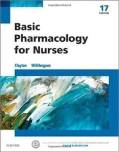In the world of accounting, understanding the principles and concepts of financial statements is crucial for professionals aiming for accuracy and compliance. The Intermediate Accounting J David Spiceland 10 Edition Test Bank provides a comprehensive resource for students and practitioners to enhance their knowledge and skills in this field.
Chapter 3 of the Test Bank delves into “The Steadiness Sheet and Financial Disclosures,” offering valuable insights into the components and limitations of balance sheets. Let’s explore a few key points covered in this chapter:
1. The balance sheet reflects an organization’s financial position at a specific point in time, providing a snapshot of its assets, liabilities, and equity.
2. Contrary to popular belief, a company’s market value is not necessarily less than its book value, challenging the notion of market perceptions versus financial realities.
3. Current assets encompass cash or assets expected to be converted into cash or utilized within a year or the operating cycle, whichever is longer, showcasing liquidity and operational efficiency.
4. Net receivables represent the anticipated amount to be collected, emphasizing the importance of accurately valuing accounts receivable.
5. Prepaid expenses are classified as current assets if the associated services are expected to be consumed within a year or the operating cycle, demonstrating the timing relevance in asset classification.
6. Assets categorized as property, plant, and equipment primarily include tangible assets like machinery, equipment, and real property, distinguishing them from current assets.
7. Intangible assets, such as patents and trademarks, are not typically reported as current assets on the balance sheet, highlighting the distinct nature of these assets.
8. Accrued salaries and wages represent compensation earned by employees but not yet disbursed, underscoring the liability aspect of unpaid obligations.
9. Disclosure notes in financial statements provide additional information on items like cash equivalents and significant accounting policies, enhancing transparency and understanding.
10. Long-term liabilities details, including payment terms, interest rates, and other specifics, are commonly disclosed in financial statement notes, offering a comprehensive view of a company’s financial commitments.
Overall, Chapter 3 of the Intermediate Accounting J David Spiceland 10 Edition Test Bank offers a foundational understanding of balance sheet components and financial disclosures essential for accounting professionals and students alike. By mastering these concepts, individuals can navigate the complexities of financial reporting with confidence and accuracy.
—
### FAQ
**Q: What is the significance of the balance sheet in financial reporting?**
A: The balance sheet provides a snapshot of an organization’s financial position at a specific point in time, showcasing its assets, liabilities, and equity.
**Q: How are current assets classified, and why is it important?**
A: Current assets include cash or assets expected to be converted into cash or utilized within a year or the operating cycle, reflecting the company’s liquidity and short-term financial health.
**Q: Why are disclosure notes crucial in financial statements?**
A: Disclosure notes offer additional details and explanations on items mentioned in the financial statements, enhancing transparency and aiding in a better understanding of the company’s financial condition.
—
In conclusion, mastering the concepts outlined in Chapter 3 of the Intermediate Accounting J David Spiceland 10 Edition Test Bank is essential for individuals looking to excel in the field of accounting. By grasping the intricacies of balance sheets and financial disclosures, professionals can enhance their financial acumen and contribute effectively to sound financial decision-making processes. The detailed insights provided in this chapter serve as a valuable resource for students and practitioners striving for excellence in the dynamic world of accounting.










Be the first to review “Intermediate Accounting J David Spiceland 10 Edition – Test Bank”